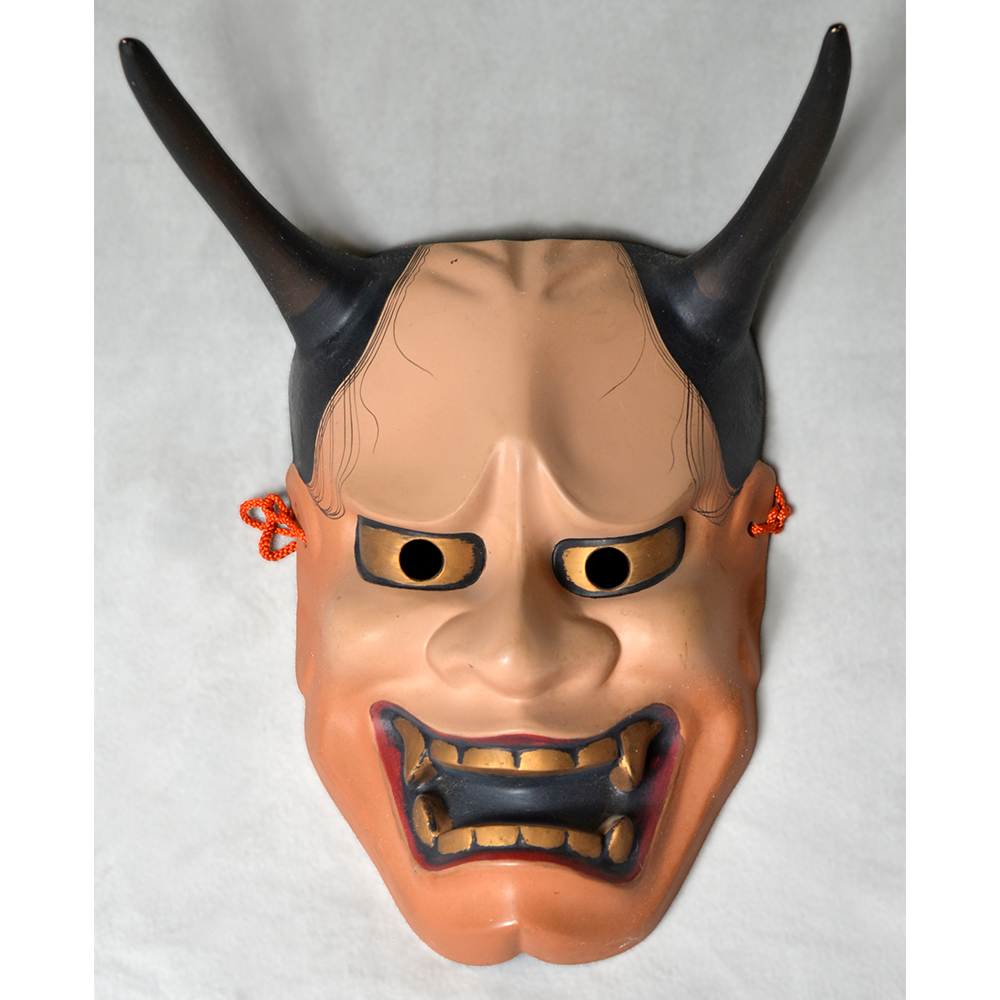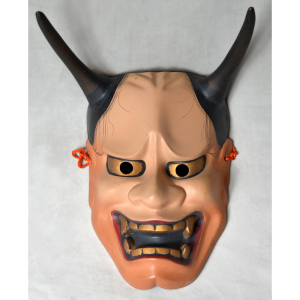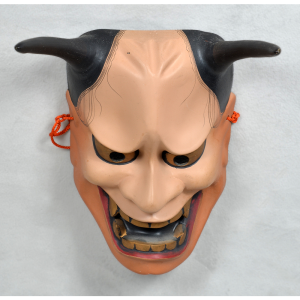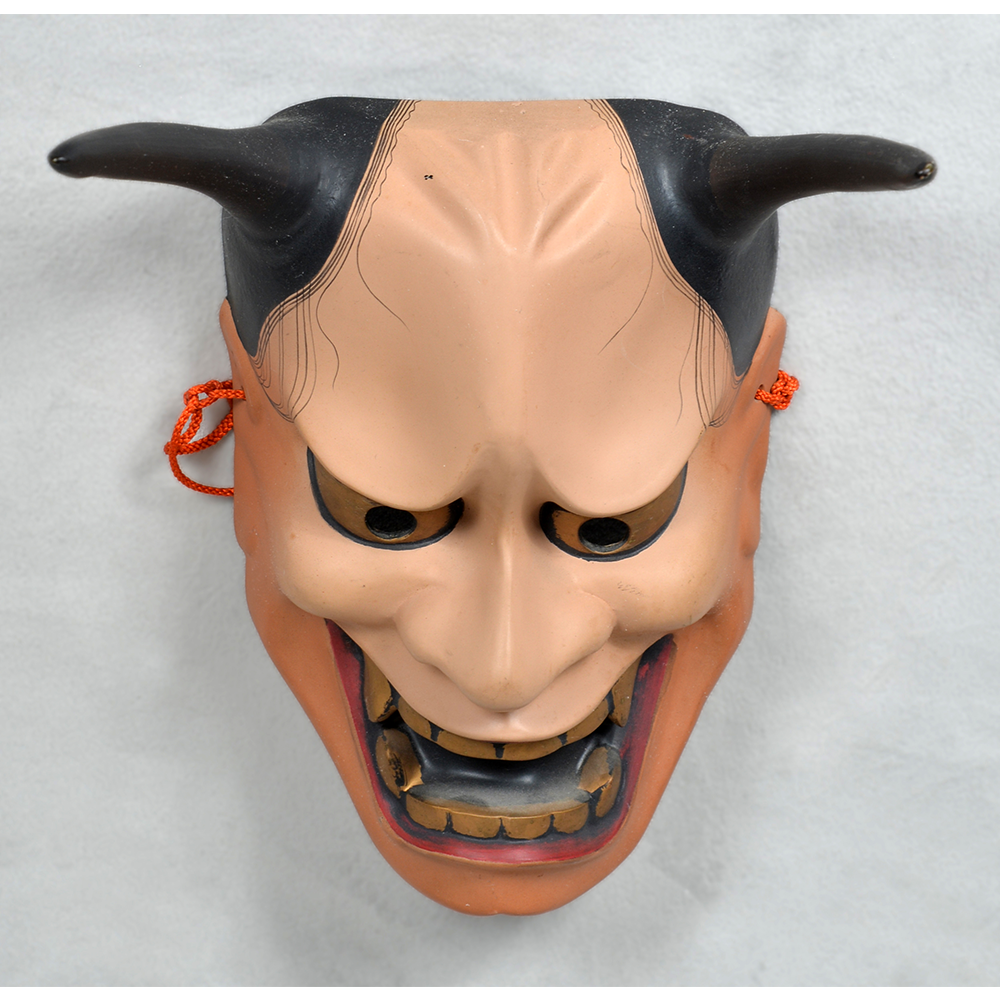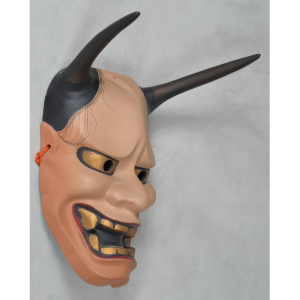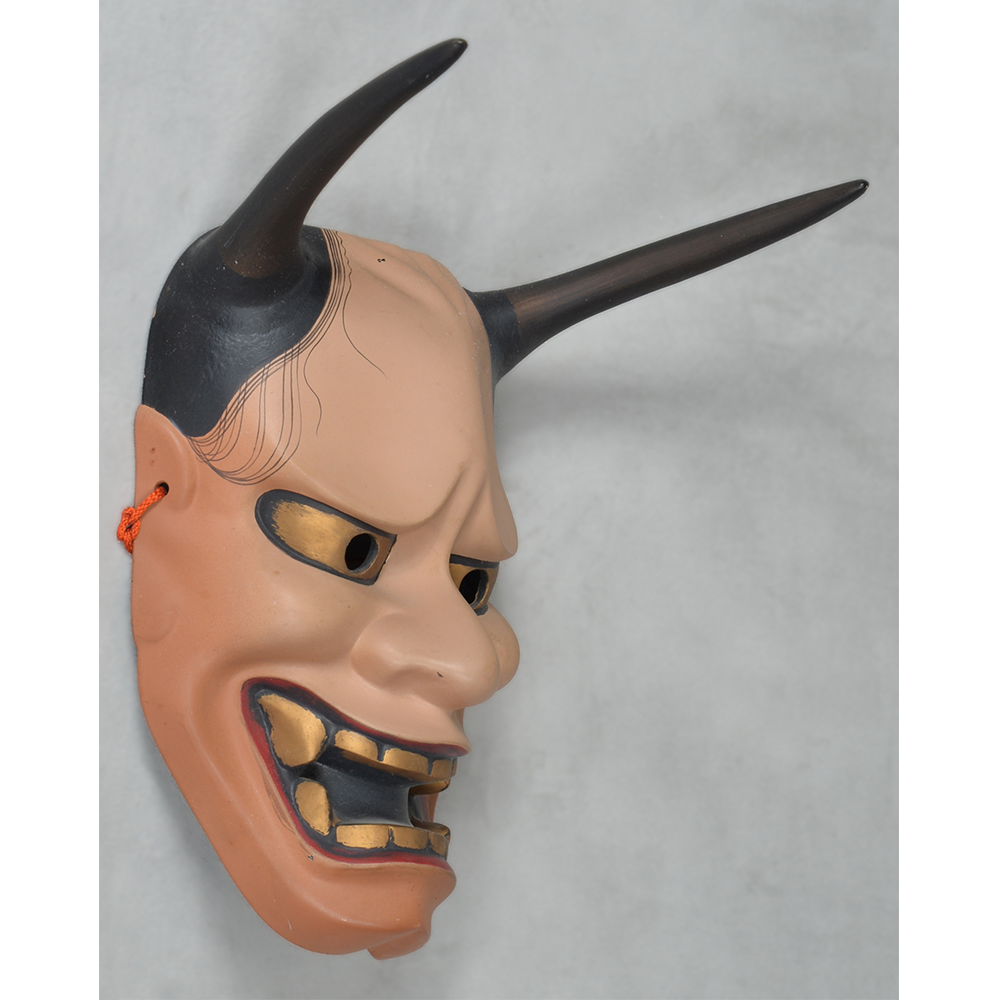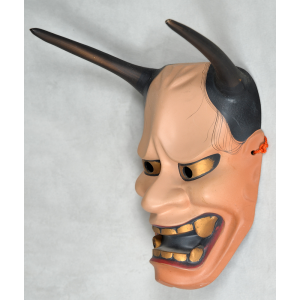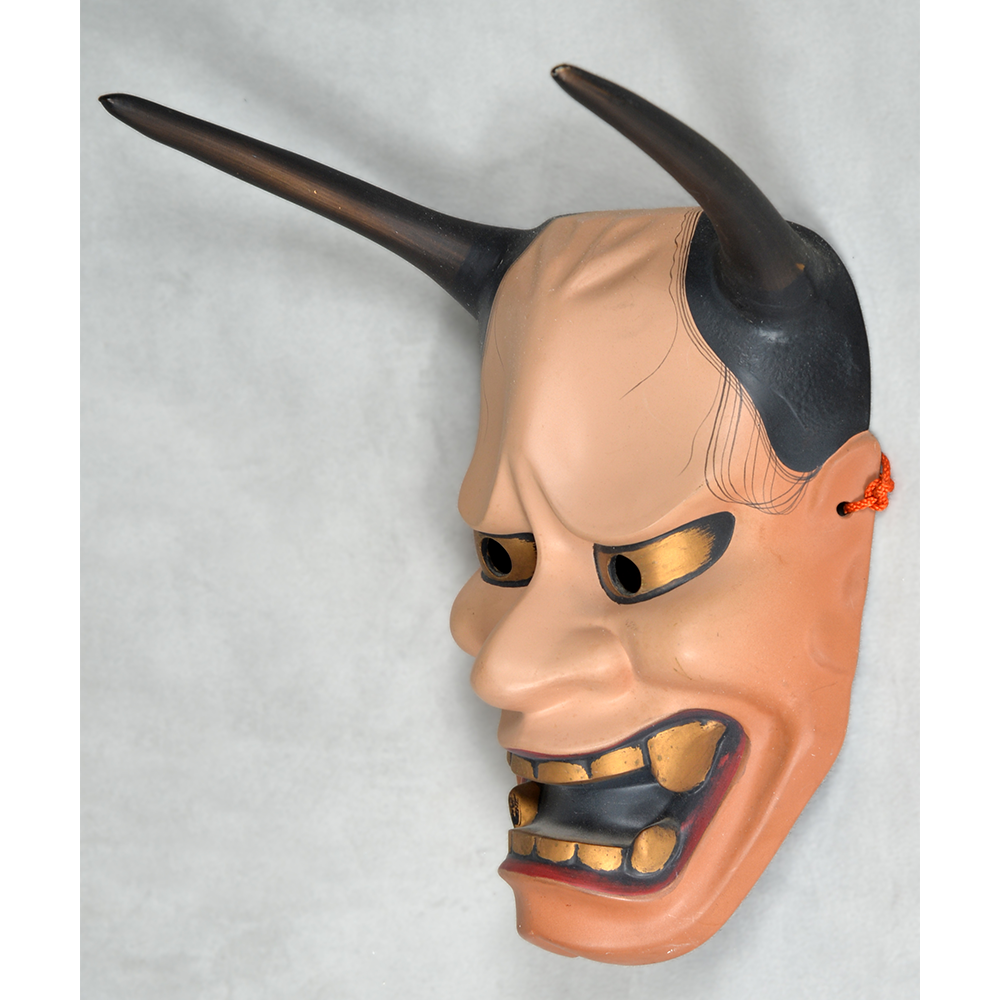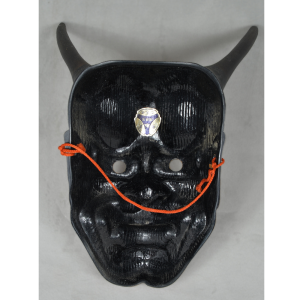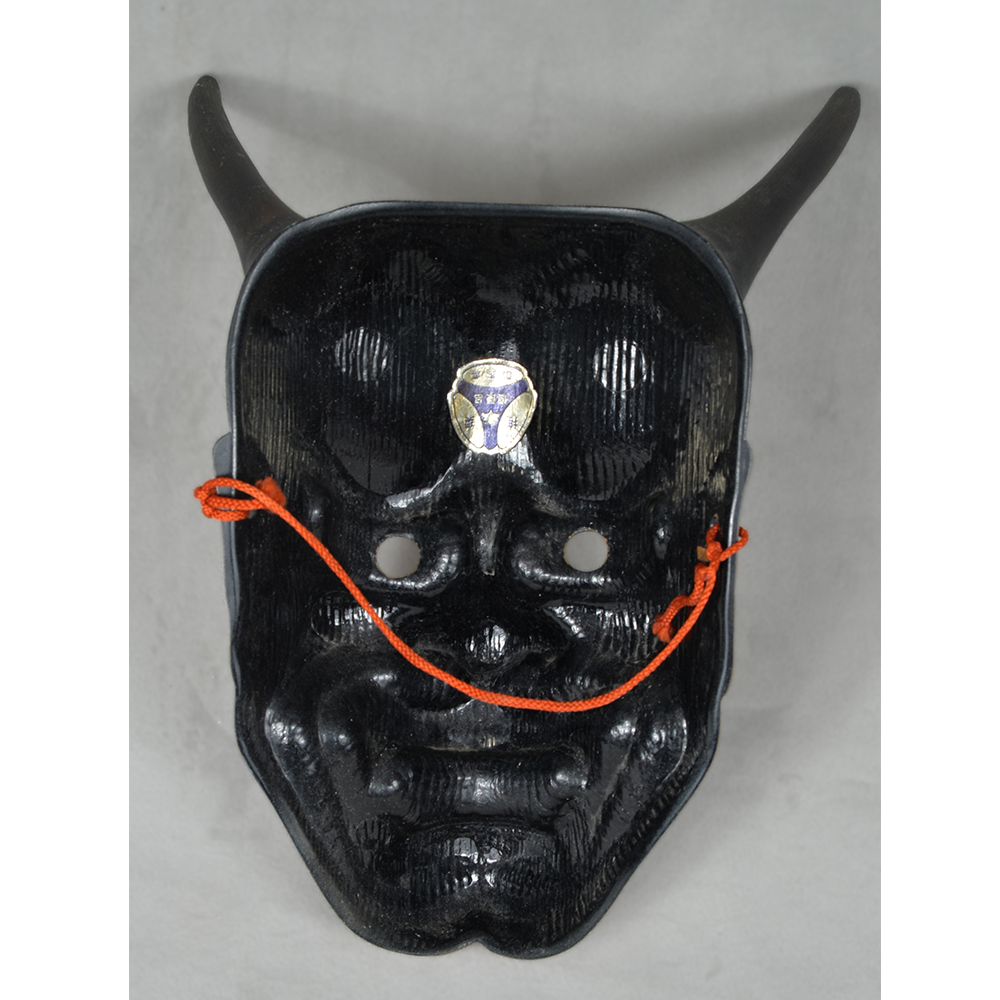TITLE: Noh Hannya
TYPE: face mask
GENERAL REGION: Asia
COUNTRY: Japan
SUBREGION: Gunma Prefecture
ETHNICITY: Japanese
DESCRIPTION: Hannya Mask
CATALOG ID: ASJP021
MAKER: Unknown
CEREMONY: Noh Theater
AGE: 1950s-60s
MAIN MATERIAL: wood
OTHER MATERIALS: paint; brass; gold dust; lacquer; silk string
The Noh theater evolved from a combination of Chinese Nuo opera, popular village entertainment known as Sarugaku, and courtly Bugaku dance to become a uniquely Japanese form of high culture. Noh, or Nōgaku, probably first emerged as a distinct form of theater in the 14th century. A wide variety of plays developed over the ensuing three hundred or so years, with masked characters playing an important role in most. The masks require the actors to communicate through posture, body movement, and vocal control, whose perfection requires years of intense training. Although the masks prevent the actor from using facial expression, the most expertly carved masks can be made to express different emotions at different angles, so that he actor can change facial expression by the tilting his head.
This specific mask represents Hannya, the soul of a female who has become a demon or ghost through jealousy or obsession. The mask is designed to look angry from straight ahead, but sorrowful when tilted downward. Only exceptionally skilled carvers are able to produce a Hannya with the ability to convey both malice and misery. Light-skinned Hannya like this one denote aristocratic women; red masks indicate peasant women. All such roles were traditionally played by men.
For more on Noh masks, see the excellent book by Michishige Udaka and Shuichi Yamagata, The Secrets of Noh Masks (Tokyo: Kodansha International , 2010).
To watch a short documentary about Japanese Nogaku (Noh drama and Kyogen plays), click above.
